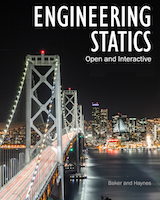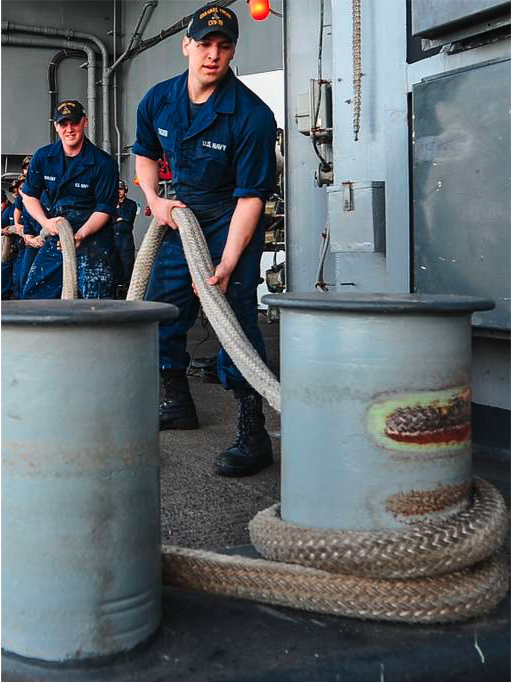This interactive shows
FBDs of a belt and pulley system, and the isolated belt. You can change the belt tensions by moving the red dots, and the moment will adjust to maintain equilibrium, or change the moment with the slider, and the belt tensions will change. You can also adjust the coefficient of static friction
\(\mu_s\text{.}\)
For simplicity, the radius of the pulley is
\(\m{1}\text{.}\)
It is impossible to tell from this diagram whether the system is rotating CW or CCW at constant velocity, or is stationary. If the required friction
\(F_f\) is greater than
\({F_f}_\text{max}\) the belt will slip. If either belt tension is less than zero, it will go slack.

















